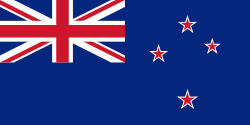Gisborne Region (Gisborne)
The region is commonly divided into the East Cape and Poverty Bay. It is bounded by mountain ranges to the west, rugged country to the south, and faces east onto the Pacific Ocean.
Prior to the late 19th century, the area was known as Tūranga. However, as the Gisborne town site was laid out in 1870, the name changed to Gisborne, after the Colonial Secretary William Gisborne, and to avoid confusion with the town of Tauranga.
The region was formerly known as the East Coast, although the region is often divided into the East Coast proper (or East Cape), north of the city, and Poverty Bay, the area including and surrounding the city. The region is also sometimes referred to as the East Cape, although that also refers specifically to the promontory at the northeastern extremity. More recently, it has been called Eastland, although that can also include Ōpōtiki in the eastern Bay of Plenty to the northwest, and Wairoa to the south.
Its Māori name Te Tai Rāwhiti means the Coast of the Sunrise, reflecting the fact that it is the first part of the New Zealand mainland to see the sun rise. Gisborne District Council styles the name as Te Tairāwhiti.
Map - Gisborne Region (Gisborne)
Map
Country - New_Zealand
 |
 |
| Flag of New Zealand | |
The islands of New Zealand were the last large habitable land to be settled by humans. Between about 1280 and 1350, Polynesians began to settle in the islands and then developed a distinctive Māori culture. In 1642, the Dutch explorer Abel Tasman became the first European to sight and record New Zealand. In 1840, representatives of the United Kingdom and Māori chiefs signed the Treaty of Waitangi, which in its English version declared British sovereignty over the islands. In 1841, New Zealand became a colony within the British Empire. Subsequently, a series of conflicts between the colonial government and Māori tribes resulted in the alienation and confiscation of large amounts of Māori land. New Zealand became a dominion in 1907; it gained full statutory independence in 1947, retaining the monarch as head of state. Today, the majority of New Zealand's population of 5.1 million is of European descent; the indigenous Māori are the largest minority, followed by Asians and Pacific Islanders. Reflecting this, New Zealand's culture is mainly derived from Māori and early British settlers, with recent broadening of culture arising from increased immigration. The official languages are English, Māori, and New Zealand Sign Language, with the local dialect of English being dominant.
Currency / Language
| ISO | Currency | Symbol | Significant figures |
|---|---|---|---|
| NZD | New Zealand dollar | $ | 2 |
| ISO | Language |
|---|---|
| EN | English language |















